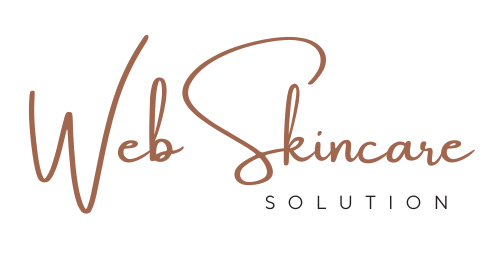You are probably asking yourself what in the hell is gluconolactone?! Although you haven’t heard of gluconolactone, it’s an essential skincare ingredient you should know about.
Let’s now explore what this skincare ingredient is and whether is ideal for people that do have dry and sensitive skin. 🙂
What is gluconolactone?
The acid gluconolactone belongs to a group of acids called polyhydroxy acids, or PHAs.
The PHA is part of the poly-hydroxy acid family, a group of acids that are often neglected in favour of their more glamorous cousins, beta-hydroxy acids and alpha-hydroxy acids. Despite that, PHAs, particularly gluconolactone, deserve their fair share of attention in skincare. It is a good choice to improve skin tone and texture, dissolving the dead skin cells that cause your complexion to appear dull and rough.
Gluconolactone can be found in many beauty products, including moisturizers, toners, serums, creams, sunscreens, and face masks.
Related* Aha 30 Bha 2 peeling solution vs lactic acid
How does it differ from other acids?
The gluconolactone acid, like all other acids, removes dead skin cells from the outermost layer of the skin, resulting in a smoother, brighter complexion.
But you may ask, what is the main difference then? Well, the difference is that it attracts water to the skin. This means that gluconolactone is not just an acid exfoliator, but also hydrates, making it considerably gentler than other acids.
Furthermore, it is a much larger molecule that cannot penetrate very deeply into the skin, which makes it gentler and an excellent option for sensitive skin.
These are some of the key characteristics that set gluconolactone apart from other AHAs and BHAs, which makes it a great pick for sensitive skin.
What are the main benefits?
*It exfoliates the skin. Acids act as chemical exfoliants, dissolving dead, dry skin cells on the surface. Additionally, it can help remove excess oil and improve texture (by removing fine lines and blemishes)
In addition to removing dead skin cells from the outermost layer of your skin, gluconolactone also brightens and smoothes your complexion.
*Provides moisture to the skin. Gluconolactone is a humectant because of those extra hydroxyl groups, which work to hydrate skin by attracting water to it.
*Protects against free radical damage. Researchers have found some evidence that gluconolactone combats UV damage by neutralizing free radicals. However, it may not be a traditional antioxidant like vitamin C or vitamin E.
–Antimicrobial properties may be present. Some research suggests that gluconolactone may have antimicrobial properties, making it a good choice for the treatment of acne.
Can people with dry, sensitive skin use it?
Yes, the answer is yes.
The molecular structure of gluconolactone and other PHAs is larger than that of AHAs and BHAs. Due to its larger chemical structure, gluconolactone is gentler on the skin because it doesn’t penetrate past the first layer, giving it a softer feel.
Gluconolactone acts as a humectant (moisture-lock) and is milder than its cousin (AHAs and BHAs). Therefore, it is excellent for sensitive skin.
It is even considered to be the gentlest acid out there. Gluconolactone may be a better option if you have irritation, redness, peeling, or any other reaction after using acid-based ingredients like AHAs and BHAs.
How to use it?
Gluconolactone dosage depends entirely on the ingredients and products you are using. A few times a week is usually sufficient for using an exfoliator containing gluconolactone. You can apply gluconolactone moisturizer as often as twice a day.
Even if you don’t use other chemical exfoliators in your routine, gluconolactone is gentle enough to use daily on most skin types.
It’s important however to understand your skin type and concerns before using gluconolactone. Make sure the label has instructions on how to use it.
In general, gluconolactone acts synergistically with retinoids and acids. However, if you have sensitive skin, you should take extra precautions! It’s best to spread out the use of a combination of products. During the day, you can use acids/retinoids and at night you can use gluconolactone or alternate the days. It is up to you.
What to note/consider
Despite its mild exfoliating and hydrating properties, experts don’t necessarily consider it an active ingredient, but rather more of a supporting component.
In addition, results do not occur immediately like they do with other serums or creams. Gluconolactone is shown to help reduce wrinkles and fine lines in six weeks, but better results are obtained after twelve weeks of continuous use.
Gluconolactone is a fantastic ingredient if you’re looking for a long-term solution and not just a quick fix. It’s nonetheless worthwhile to look for it and include it in your skincare routine, even if it’s an in-your-face ingredient.
Side effects
Most skin types, including sensitive skin, can tolerate gluconolactone.
If you have rosacea or atopic dermatitis, you should however take extra precautions when using topical acids. Note that it is still an acid, so there is a possibility of redness and dryness
QUICK POINTS TO NOTE: GLUCONOLACTONE
- IS AN EXFOLIATOR
- BENEFITS: ENHANCES SKIN TONE, HYDRATES, AND PROVIDES SOME ANTIOXIDANT BENEFITS.
- WHO SHOULD USE IT: According to Farber, it’s good for all skin types, in particular mature or sensitive skin that cannot tolerate the irritation caused by AHAs and BHAs.
- HOW OFTEN CAN YOU USE IT: You can use it daily if you aren’t using any other chemical exfoliants in your routine a few times a week. It few times during the week
- WORKS WELL WITH: retinoids, vitamin C, and alpha- and beta-hydroxy acids—as part of an overall anti-ageing regimen.
- DON’T USE WITH: When used with other acids or exfoliants such as retinoids, you should be cautious about over-exfoliation.
To conclude, if you’re a fan of skincare, make sure you learn about gluconolactone, the magical PHA. As a gentle exfoliator, it’s making news for being able to change your skincare routine for the better. What an amazing skincare solution!





